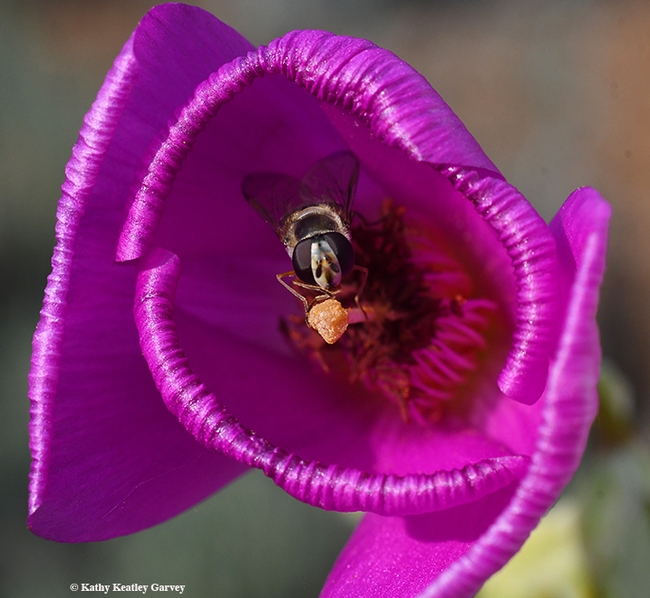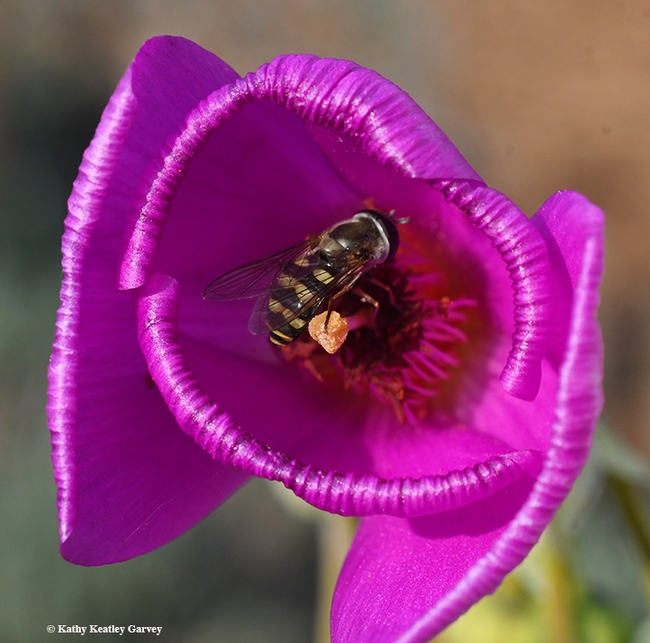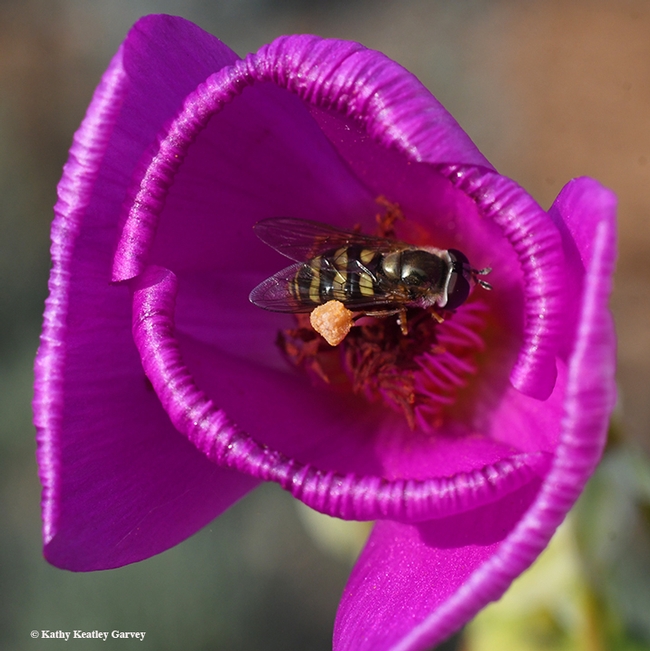When a house is a home...
Take the case of a syrphid fly, aka hover fly or flower fly. It's a cold and windy day, and it's tucked in the folds of a rock purslane, Calandrinia grandiflora, in Vacaville, Calif.
It's sipping nectar, and rotating its colorful little body to gather more nectar and glean more sun.
The syrphid fly is often mistaken for a honey bee. Both are pollinators.
Three of the easiest ways to differentiate a fly from a bee:
- A fly has one set of wings. A bee has two sets.
- A fly has short, stubby antennae. A honey bee doesn't.
- A fly has no corbicula or pollen basket. A honey bee (worker bee) does.
Last year Joanna Klein posted an interactive feature in the New York Times, wondering how we can save the bees if we don't recognize them. She asked "Can You Pick the Bees Out of This Insect Lineup?" and posted an image of bees and wanna-be bees.
Find the flies.
And then access a PDF on flower flies on the UC Agriculture and Natural Resources website to learn more about them. Authored by lead author/entomologist Robert Bugg, it's titled "Flower Flies (Syrphidae) and Other Biological Control Agents for Aphids in Vegetable Crops."
Attached Images:

A syrphid fly, tucked in the folds of a rock purslane, Calandrinia grandiflora, sips nectar. (Photo by Kathy Keatley Garvey)

The syrphid fly rotates its body to gather more nectar glean more sun. (Photo by Kathy Keatley Garvey)

The syprhid is just about ready to take flight. (Photo by Kathy Keatley Garvey)